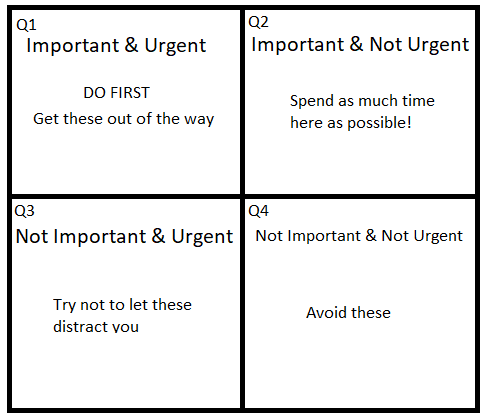Useful Time Management Tips
I’m going to touch on some time management tips I’ve discovered that significantly impacted my productivity. Use this as a guide and do your own research to figure out what works best for you. Maybe one day I’ll go into specifics on how I fine-tuned them to suit my needs.
1. Schedule Focus Time
Every. Single. Day. I’m almost upset I never thought to do this before. Seriously, if you’re not already doing this and want to improve yourself, this is a huge. This tip created a snowball effect that lead to me discovering every other tip on this list. All you need to do is make sure you dedicate bare minimum one hour per day doing something productive for yourself. It’s an excuse to learn about what genuinely interests you. Try to improve your process. Write. I don’t care what you do, but it better be in service of yourself.
Actionable Advice:
- Figure out when you typically have free time. Now schedule out one hour of that free time and call it “Focus Time.”
- Plan these days in advance so you’re not losing part of that time choosing what to do.
2. Use the Pomodoro Technique
The second most impactful tip I’ve gotten from my time management research has been to use the Pomodoro Technique.
All you need to do is give yourself a short, timed period where all you do is focus on one task. Follow this up with a short break, and after four of these take a long break. Standard Pomo’s seem to be twenty-five minutes, a five minute break, and a thirty minute break after four pomos.
Actionable Advice:
- Get a timer and use it!
- Actually use the short breaks! I’m much more burnt out at the end of the day when I don’t.
- Try keeping the timer in view.
3. Make Use of Downtime
You know those things you know you should do in small chunks over time? Learn a language, keep up with your news, or slowly make your way through a book? This is where you do that. My time spent in the bathroom is surprisingly productive now!
Actionable Advice:
- List out windows of time you’re typically idle and assign a task for each window. (Think bathroom time, waiting in line at the store, waiting for someone, etc.)
- Leave a book in the bathroom.
- Skip social media here unless it adds value to your life.
4. Prioritize Using the 4 Quadrants (The Eisenhower Matrix)
The basic idea here is that every task has a relative importance and urgency. The trick with these tasks is the order in which you do them. This crappy MS Paint drawing sums it up well enough.

The most important lesson here is to focus on what’s important and not urgent (Q2)! If you shift between Q1 and Q3, you always feel pressed for time. Instead, shift between Q1 and Q2 to enter a positive cycle that prevents items from getting to Q1! That’s more time and less stress. What’s not to love?
Actionable Advice:
- Draw out your Eisenhower Matrix
- After you finish Q1, focus most of your energy in Q2.
5. Do High Level Planning With Objectives and Key Results
The thing I love about OKR’s is that they’re an entire system that you can simplify into a single sentence. Here’s an example of my first OKR to help get the ball rolling.
Example: [In November & December 2020] I want to Improve my Process, as measured by planning out 14 days, committing to 1 hour of learning for 14 days, tracking 50 Pomodoro’s, and integrating one new tool to improve my workflow.
The trick here is to make sure everything is clear, achievable, and measurable. In essence, define a set of three to five high level goals with specific criteria to meet within a given time frame. Stick with 3~5 objectives, each with 3~5 key results. Any more and you can lose focus.
Actionable Advice:
- Determine what your high level goals are. I want to _____.
- Define specific, measurable results and actively track them. As measured by _____.
- Assign a period of time you want to achieve these in.
- If certain Key Results or Objectives aren’t making headway, change them!
Some Sort of Conclusion
These tips have improved my workflow on a micro and macro scale. OKR’s and the Four Quadrants help me plan and make more effective use of my time. While the Pomodoro technique, scheduling focus time, and making use of downtime help me execute and ensure my time is spent efficiently. Remember that self-improvement is a process and these tips aren’t for everyone. Regardless, I encourage you to give them a shot.